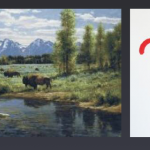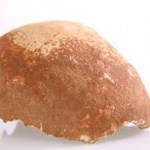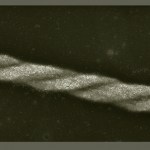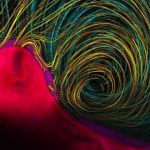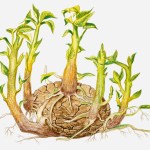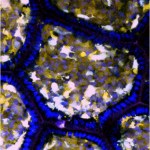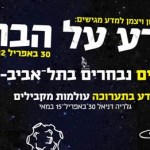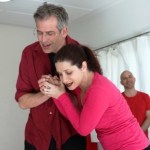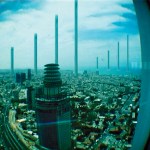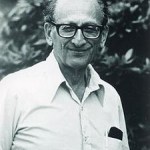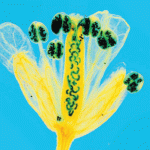art and science
In the old days, the words "art" and "science" did not mean the same thing they mean today, at least in academia. Today, unfortunately, they have almost come to mean opposites. You can't be doing both at once. Or, at least, that's what people who haven't thought about it much may think.
Art can be used to engage people in science, and science can provide a subject for art, and in various ways, the twain shall meet.
But in Reductionism in Art and Brain Science: Bridging the Two Cultures, Erik Kandel does something both more extreme and more specific than simply joining the two endeavors.…
Next week is a big week for science in Israel. Tuesday is National Science Day, and Thursday is the annual Science on Tap talks in the bars and restaurants of Tel Aviv. Don't know about National Science Day -- this science writer will just point out that of all the minstries that are being fought over tooth and nail in our new government, the Ministry of Science does not even appear the list.
Science on Tap, however, is gearing up with the splash it deserves. Here is the main drag outside the huge Azrieli complex:
So if you're in or around Tel Aviv next week, check it out. All the…
Manot Cave cranium
With a skull and Keats, there was little choice but to write about the new online items in rhyme. So with apologies to Shakespeare, Keats and the scientists, as well as the people at SpaceIL, here are today's grab bag of poems. As usual, follow the links.
On a Lone Cranium
Alas poor Yorick – We can only know
Where you lived all those eons ago
Walking, did you take those others in stride;
Human, yet strange, as they strode alongside?
Did your children wander forth,
Searching for a greener North?
Can your skull, a bit of bone,
Tell us where our seeds…
Once again, there are three new pieces online on our website, each wonderful in its own way. But Haiku just didn’t seem to fit this batch. So, with apologies to the scientists, here are three limericks on the newest Institute research. As before, follow the links to get to our website.
(Incidentally, there is some precedent for limerick writing at the Weizmann Institute. The late Prof. Amikam Aharoni, who also wrote some serious stuff on ferromagnetism, was known for his limericks.)
The Quasar
There once was a baby black hole
That went for a short little stroll
It zigged and it zagged…
Today’s new articles involve flow: the flow of positrons through the Universe and the flow of particles around the tiny cilia of corals. They involve beauty and mystery, as well. The particle flow, imaged in brilliant colors, won first place in the photography category of the 2013 Science/National Science Foundation International Science & Engineering Visualization Challenge.
And positrons – the anti-matter opposites of electrons – have been found in large numbers flowing in near-Earth space. Weizmann Institute research points to an answer to one riddle: Why did a satellite…
Since the haiku post was well received, and since we have another three pieces online today – each on a different finding and each interesting in its own right – I have decided to return to the haiku format. Among other things, there is something quite satisfying about distilling complex scientific findings down to 17 little syllables – like writing the perfect tweet, but more so.
In any case, follow the links to read more:
A burst of enzymes:
A transcription traffic jam
Watch for gene speed bumps
Genetics can rid
The poison from potatoes
Or add it elsewhere
image: Thinkstock…
Poetry is finding its way into our consciousness at the Weizmann Institute: At the recent, fourth annual Science on Tap evening, which the Institute hosts in Tel Aviv, several poets joined in the fun, reading from their work before and after the talks given by scientists in over 60 filled-to-capacity pubs and cafes around the city. And calls have gone out for entries to the Ofer Lider creative writing contest – open to scientists (writing in Hebrew). The contest is named for Prof. Ofer Lider, an Institute scientist who, sadly, died young and who wrote poetry because he believed that…
Zheng Lab - Bad Project (Lady Gaga parody) - YouTube.
Art and Science: Dancing in the greenhouse singing about DNA
Weigel Style Gangnam Style Parody - YouTube.
Explain to a pub full of beer drinkers exactly what it is you do in your lab. That's the idea behind Science on Tap, which will be taking place again this year in bars, coffee shops and restaurants in the heart of Tel Aviv's entertainment district at the end of the month.
A Science on Tap billboard like this hangs over the entrance to Tel Aviv - the number has since risen to 55
This one is the biggest event yet: Over 55 Weizmann professors, doctoral students and assorted researchers have volunteered to spend an evening talking about their science to a public out looking for information and…
The actors on the stage work their magic, turning a few disparate phrases - "challenge, giving birth, infinity, chaos, visiting a new country" - into a brief but charming improvised sketch, to the delight of the audience. But the viewers, filling a large auditorium at the Weizmann Institute of Science, expect more than to be entertained. Since the improvised play is part of a lecture by Prof. Uri Alon, a Molecular Cell Biologist, they know scientific insights are bound to follow.
Indeed. Combining his two passions, science and theater, Alon has recently created a "theater lab" on the…
Our latest annual report is now online, and we think the results are worth looking at. We started with a favorite theme -- art and science -- and took it a step further. Ten short pieces on scientific research that deals with movement -- of proteins, electrons, black holes or theoretical random walkers -- are paired with works of art on a similar theme. Then we added poetry and fiction written by scientists, for good measure.
The Insomniac City Cycles Ran Slavin
Still from film, 2004-2009
It might all seem a bit exuberant, in light of continuing economic crises and regional politics. But if…
Did you not finish all your papers and grants before the holidays? Do you still have papers to review? Dont be discouraged, Twisted Bacteria has posted humorous quotes to cheer you up.
Every December, the journal Environmental Microbiology publishes a collection of quotes made by peer reviewers while assessing manuscripts submitted to the journal. Some of them are hilarious! I am extracting a few of them from the last two years, but I recommend reading them all!
Here you go:
Desperate referees:
This paper is desperate. Please reject it completely and then block the author's email ID so…
Ed Yong recently published a post called "On the origin of science writers" asking that science writers (anyone who regularly writes about science) tell the story of how they got started. The idea is to establish a resource for future writers. I joined the thread and have reprinted it here.
As far back as I can remember I loved to read and I loved the wilderness. In fact my favorite times were reading in the wilderness, preferably in a tree near our mountain cabin, high enough where my brothers could not reach me with stones or snowballs.
I did not think much about being a writer myself until…
For the 2010 Pi day bakeoff, I baked a Swiss chard-Gruyere pie.
Shown here is the backdrop to our garden:a mural on the side of our barn, painted with California poppies, rice plants, sunflowers and (look closely) a red double helix. Artist: Jim McCall, Elastic Media.
Here is the recipe:
First, gather as many ingredients as you can from your garden. In our garden, I found multi-colored swiss chard, Kale, chives, thyme and parsley.
Next, prepare the crust:
1 cup barley flour2 cups white flour
1 tsp salt
1 cup unsalted butter
1/2 cup unsalted margarine, frozen
grated rind of 1…
Science Magazine this week published the winners of this year's International Science and Engineering Visualization Challenge.
Self-Fertilization: Heiti Paves and Birger Ilau, Tallinn University of Technology
Within its tiny white flowers, thale cress (Arabidopsis thaliana) does what most plants avoid: It fertilizes itself. Heiti Paves of Tallinn University of Technology in Estonia took this photograph of the flower with its pollen grains and ovaries stained blue to show the process in action. From the six pollen heads, the grains grow thin tubes toward the bean-shaped ovaries in the flower…
